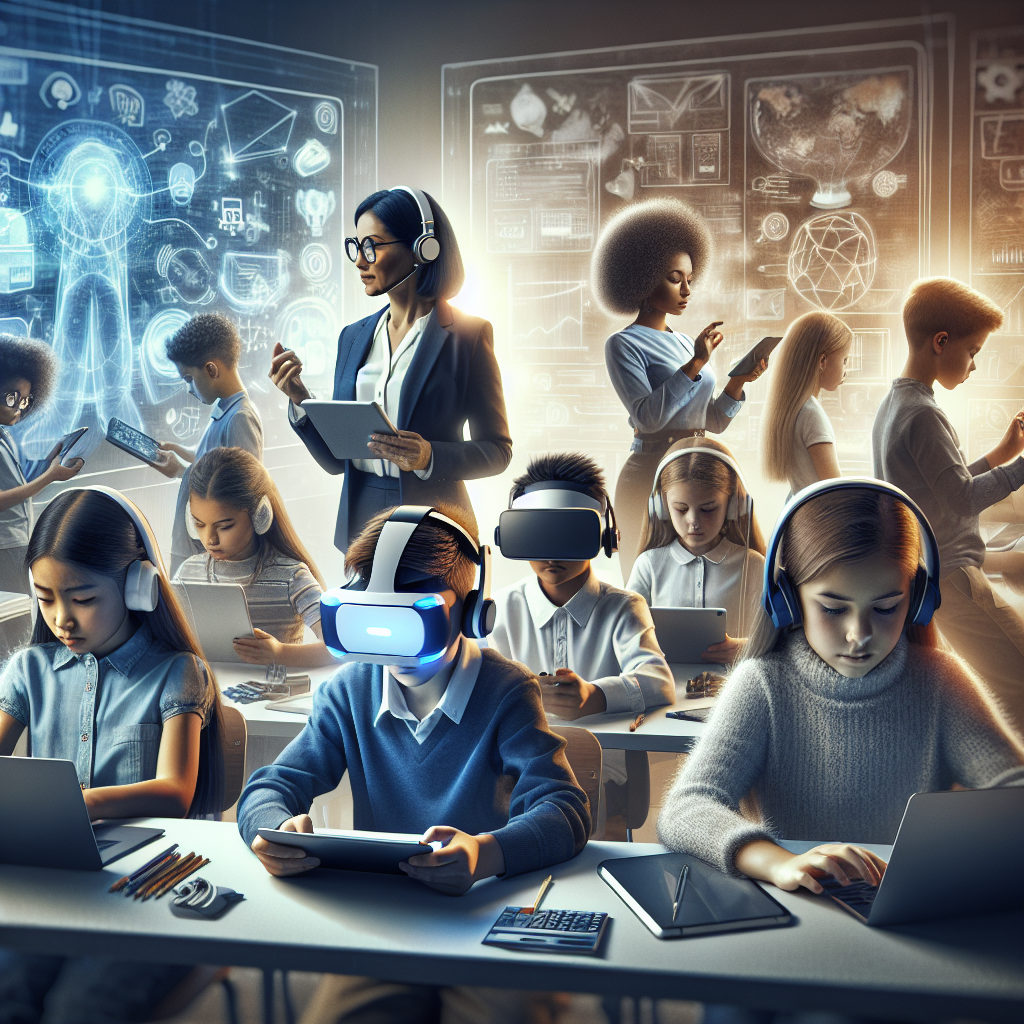Integrating Technology into the Classroom
In our rapidly changing digital world, technology in education is not just a luxury but a necessity. As educators aim to prepare students for a world that’s increasingly reliant on technology, the integration of digital tools into the learning environment has become crucial. However, it’s important to approach this integration thoughtfully, acknowledging both the benefits and the potential drawbacks. In this article, we’ll explore the role of technology in education, its pros and cons, and some insightful sayings that capture the essence of this modern shift.
The Role of Technology in Education
Technology has revolutionized the way we learn and teach. It provides a wealth of resources at our fingertips, from online libraries and educational apps to interactive whiteboards and virtual reality experiences. The goal is to create an engaging, dynamic learning environment that resonates with the digital native students of today.
Enhancing Learning Experiences
With technology, educators can customize lesson plans to cater to different learning styles and paces. Visual learners can benefit from instructional videos and infographics, while auditory learners might prefer podcasts or digital storytelling. Interactive simulations and games can make learning more engaging for kinesthetic learners.
Preparing Students for the Future
Integrating technology into the classroom helps prepare students for the digital workforce. By familiarizing them with the latest tools and platforms, we’re equipping them with valuable skills that are in high demand across many industries.
Bridging Educational Gaps
Technology can also help bridge the educational divide by providing access to quality learning materials to students in remote or underserved areas. With initiatives like online courses and educational software, learners who might not have access to traditional educational resources can still receive a quality education.
Pros and Cons of Technology in Education
While the integration of technology in education offers numerous benefits, it also comes with its own set of challenges. Here’s a look at both sides of the coin.
Pros
- Engagement: Digital tools can make learning more interactive and enjoyable, keeping students engaged and motivated.
- Accessibility: Technology provides access to a wide range of information and learning resources, regardless of location.
- Individualized Learning: Technology enables personalized learning experiences, allowing students to learn at their own pace.
- Collaboration: Online platforms facilitate collaboration among students, even when they’re not physically together.
- Efficiency: Automation of administrative tasks and grading can save teachers time and allow them to focus more on teaching.
Cons
- Distraction: Technology can be a source of distraction in the classroom if not used properly.
- Cost: Integrating and maintaining new technologies can be expensive for educational institutions.
- Training: Teachers may require additional training to effectively incorporate technology into their teaching.
- Equity: There is a risk of widening the digital divide if some students have limited access to technology at home.
- Health Concerns: Prolonged use of digital devices can lead to health issues such as eye strain and poor posture.
Sayings About Technology in Education
To capture the essence of technology’s role in education, let’s consider some sayings that reflect its impact:
- “Technology will never replace great teachers, but technology in the hands of great teachers is transformational.” – George Couros
- “Education is evolving due to the impact of the Internet. We cannot teach our students in the same manner in which we were taught. Change is necessary to engage students not in the curriculum we are responsible for teaching, but in school. Period.” – April Chamberlain
- “Technology is just a tool. In terms of getting the kids working together and motivating them, the teacher is the most important.” – Bill Gates
These sayings highlight the importance of balancing technology with the irreplaceable human element of teaching.
Integrating Technology: Best Practices
When introducing technology into the classroom, it’s vital to follow best practices to ensure it enhances the learning experience.
Start with a Clear Objective
Before integrating any new technology, educators should have a clear understanding of what they aim to achieve with it. Whether it’s improving literacy, facilitating research, or encouraging creative expression, the technology chosen should align with educational goals.
Provide Adequate Training
Teachers should receive proper training and support to feel confident using new technologies. This includes not only technical training but also guidance on pedagogical strategies that leverage technology effectively.
Encourage Responsible Use
Students must understand the importance of using technology responsibly. This includes digital citizenship, understanding online privacy, and recognizing credible sources of information.
Evaluate and Adjust
Regularly assess the effectiveness of technology in meeting educational objectives. Be open to making adjustments based on feedback from both teachers and students.
Balancing Technology with Traditional Teaching
While technology brings many advantages, it’s essential not to overlook the value of traditional teaching methods. A balanced approach that combines the best of both worlds can be the most effective way to educate. For instance, hands-on experiments in a science class or face-to-face discussions in a literature course are irreplaceable experiences that technology cannot fully replicate.
Addressing the Cons of Technology in Education
To mitigate the cons associated with technology in the classroom, educational institutions should take proactive steps.
- Developing a technology usage policy can help minimize distractions.
- Seeking grants and partnerships can offset the cost of new technologies.
- Creating equitable access by providing devices or internet access can help close the digital divide.
- Promoting healthy habits, such as regular breaks from screens, can address health concerns.
Conclusion
Technology in education is a double-edged sword, with the power to transform learning experiences while also posing new challenges. By understanding both the pros and cons and following best practices, educators can integrate technology into the classroom effectively. As we embrace the digital age, it’s crucial to remember the words of Bill Gates: the teacher is the most important tool in education. Let’s use technology to support and enhance the incredible work that teachers do every day.
Incorporating technology into education is not just about staying up-to-date with the latest gadgets; it’s about creating an inclusive, dynamic, and effective learning environment that prepares students for the future. With careful planning and a balanced approach, technology can indeed be a powerful ally in the world of education.










